The common brown cup mushroom (Peziza phyllogena) is as common as its name suggests. It is an edible species in that it is not toxic, but it isn’t foraged for the table because there’s not much to them, and they don’t taste like anything. There are a lot of lookalikes (and a lot of brown cup fungi out there!), so be sure to pay attention to all the details.
- Scientific Name: Peziza phyllogena, syn Peziza badiaconfusa
- Common Names: Common brown cup, Pig’s ear
- Habitat: Decomposing material and rotting wood
- Edibility: Non-toxic
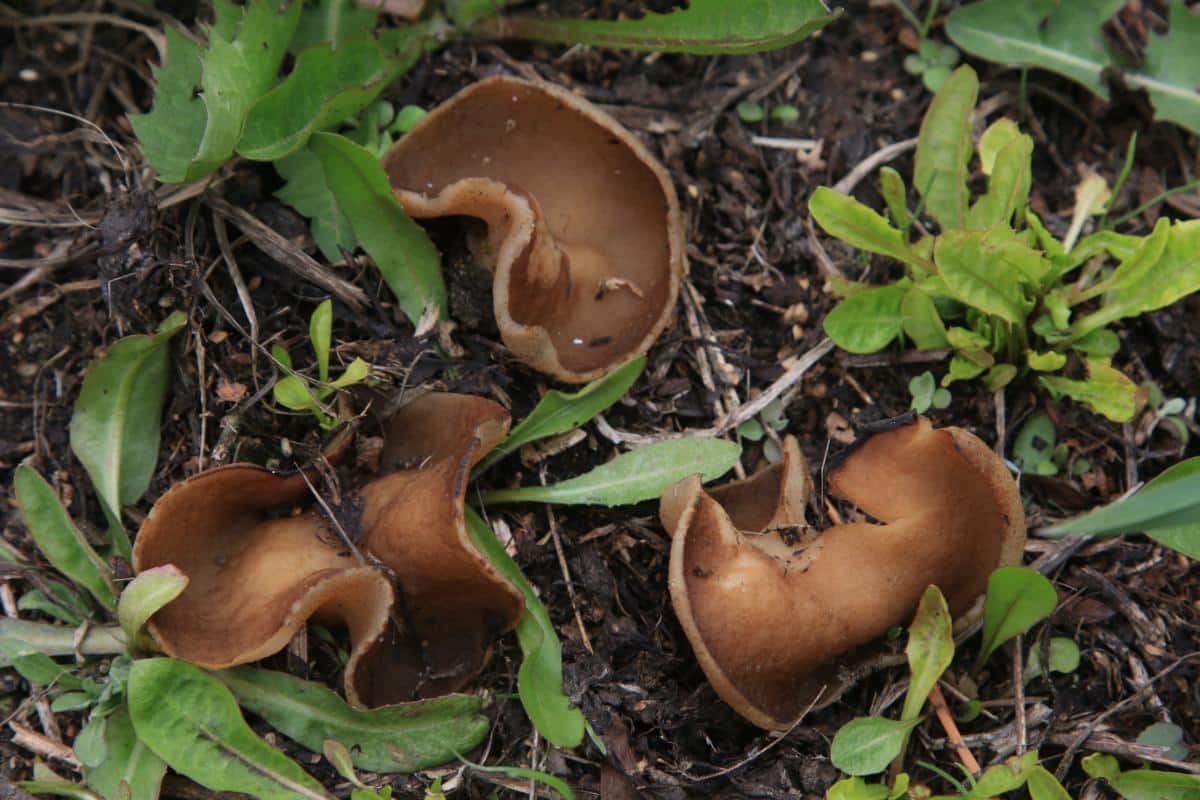
Jump to:
All About The Common Brown Cup Mushroom
This species was first recognized by the mycologist Mordecai Cubitt Cooke in 1877. It was sent to him in England by American botanist Henry William Ravenel, who gathered the specimen from South Carolina.
The scientific name ‘Peziza‘ is from the Latin and translates to stemless or footless mushroom. The descriptor ‘phyllogena‘ translates to ‘leaf-born,’ because the cups often grow on clumps of decomposing leaves. The popular name ‘Common Brown Cup’ comes from its obvious brownish cup shape, while ‘Pig-ear Cup’ is because its shape somewhat resembles a pig’s ear.
Brown Cup Fungi Identification
Season
Fruiting bodies generally appear in early spring.
Habitat
The common brown cup mushroom is a saprobic species, which means it feeds on decaying organic matter. It grows singly or in dense clusters on soil or on well-decayed logs or decomposing material. It’s not uncommon to find dozens growing tightly together in one spot, overlapping and fighting for space.
This fungus has a widespread distribution in North America, especially in the upper Midwest of the United States. It was also recorded in Iceland in 2007.
Identification
Body
The fruit bodies of the common brown cup mushroom are cup-shaped. They do not have a stem or gills like many other fungi species. The cups measure from 1.2 to 3.1 inches in diameter and are brown. The shade of brown can vary a lot from tan to dark brown, depending on the age and location of the mushroom. The inner surface of the cup is usually dark purplish-brown to dark reddish-gray. Often, the outer surface color is lighter than the interior, but still brown or tan.
The mushroom is thin and fragile, and the sides of the cup are often pressed together or lobed. The mushroom attaches directly to the substrate it is growing on.
Flesh
The flesh of this species is thin and brittle. When the cup dries, the edges turn black.
Odor
This mushroom does not have a distinctive odor.
Spore Print
The spore print of the common brown cup is hyaline, which means it is translucent to pale cream.
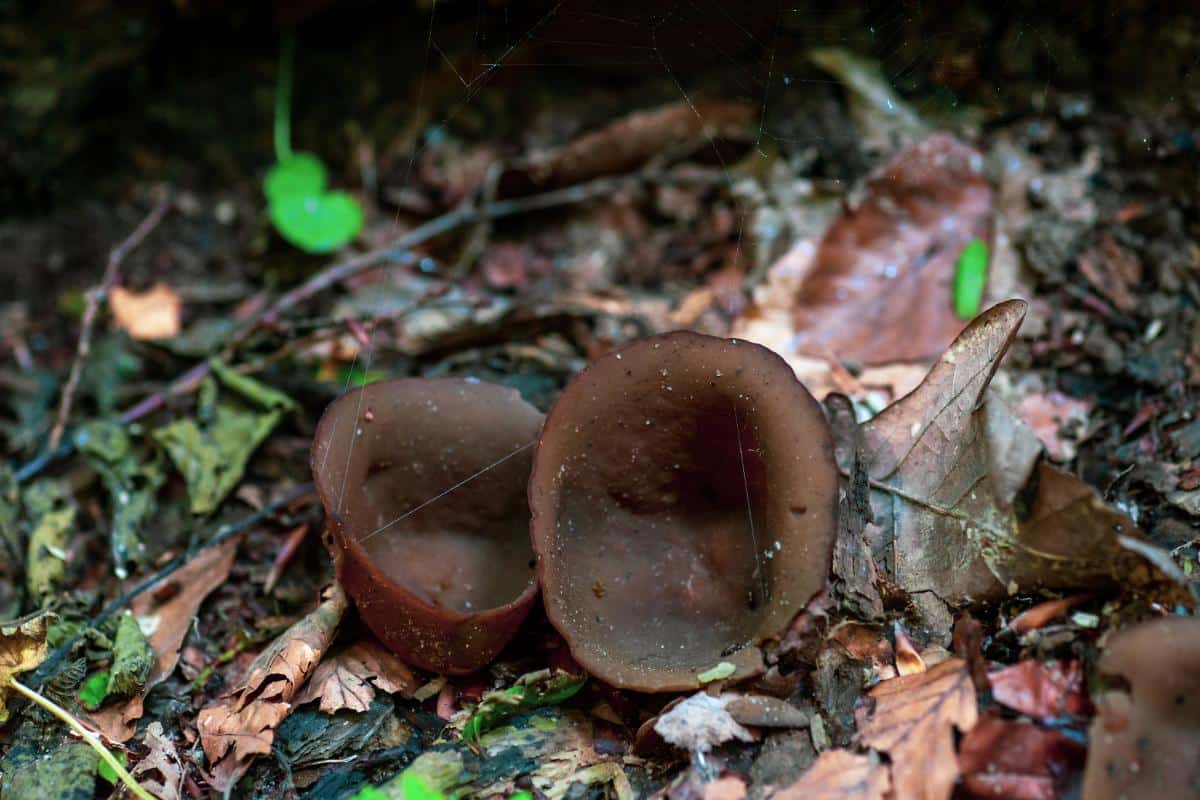
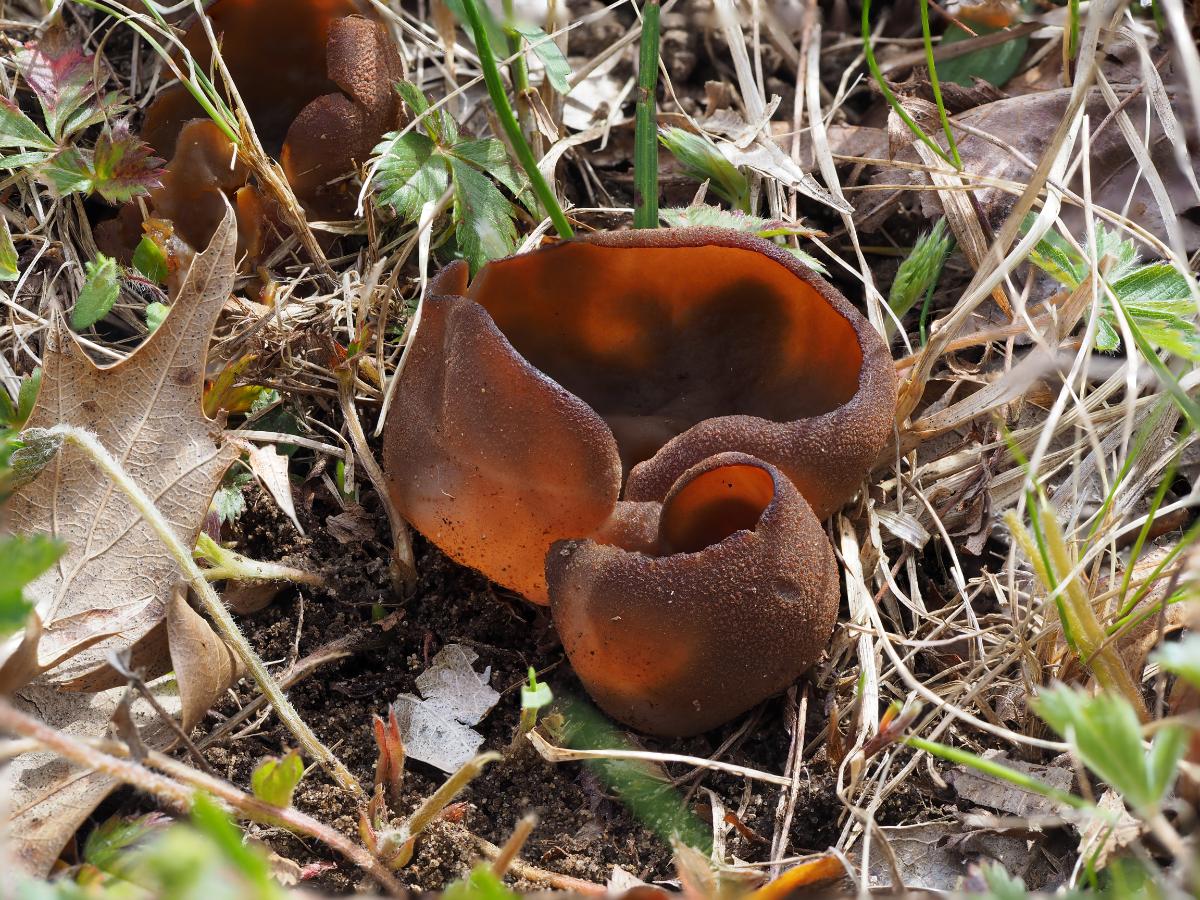
Common Brown Cup Mushroom Lookalikes
Bay Cup Fungus (Legaliana badia/Peziza badia)
This species is similar in appearance with a bay brown cup and smooth inner surface. It commonly appear on heavily compacted surfaces, in gravel, and along forest trails. The primary difference is that this cup fungus fruits in late summer and autumn, the opposite of the common brown cup which appears in spring.
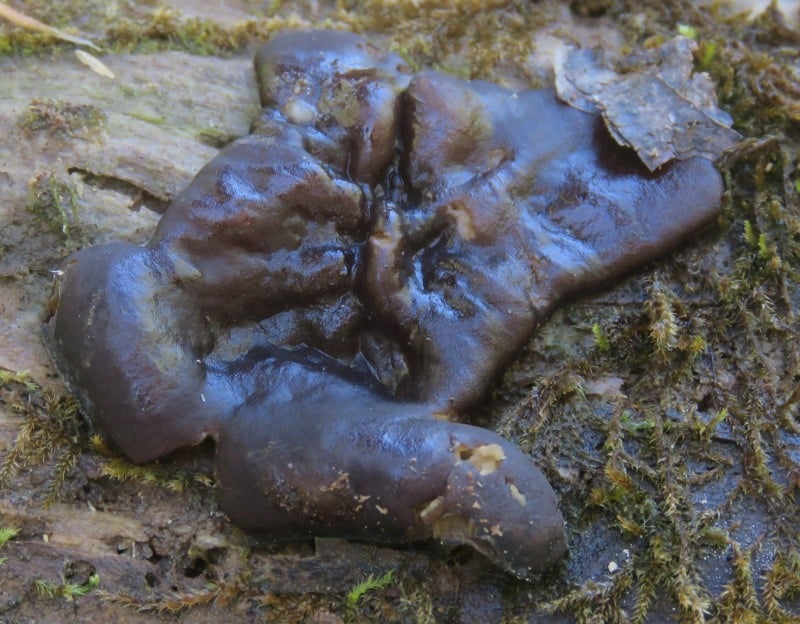
Bleach Cup (Disciotis venosa)
A closely related species that appears in the morel season just like the common brown cup mushroom, but looks a bit different. It is lighter colored on the outside (whitish to tan) and darker on the inside (dark tan to brown). Plus, the inner surface is veined, not smooth. This species grows much larger, often reaching up to 8” wide and has a short stem. It also is usually found flattened out, not cup-shaped. With age, the entire fungus opens up and lays flat(ish) on the soil surface.
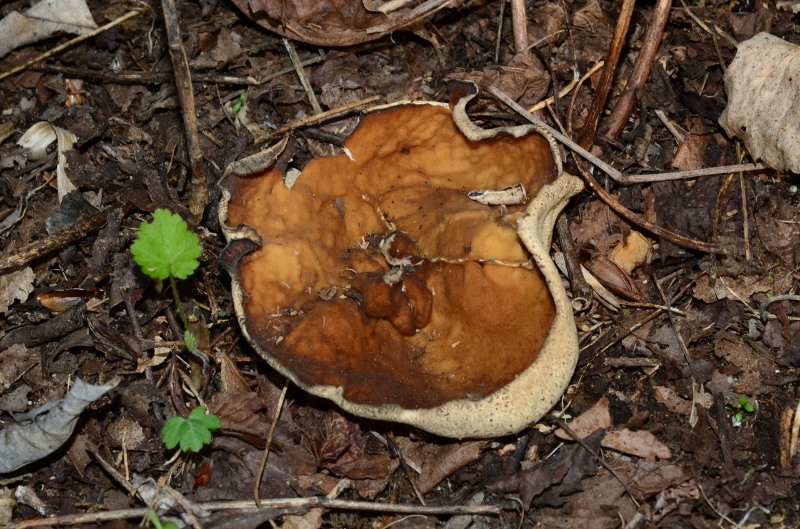
Gyromitra Cup Fungi (Gyromitra spp)
You may recognize the scientific name for these mushrooms – Gyromita fungi are the false morels, like ( ). Even though these species are closely related to the false morels they looks quite different, but also, you can see the family resemblance. This species fruits in spring, is cup-shaped, and fruits from decomposing organic material and rotting wood just like the common brown cup mushroom. It’s key differences are that it often has a stem (but not always!), and the outer flesh color is cream to whitish and not brown at all. The interior flesh is brown.
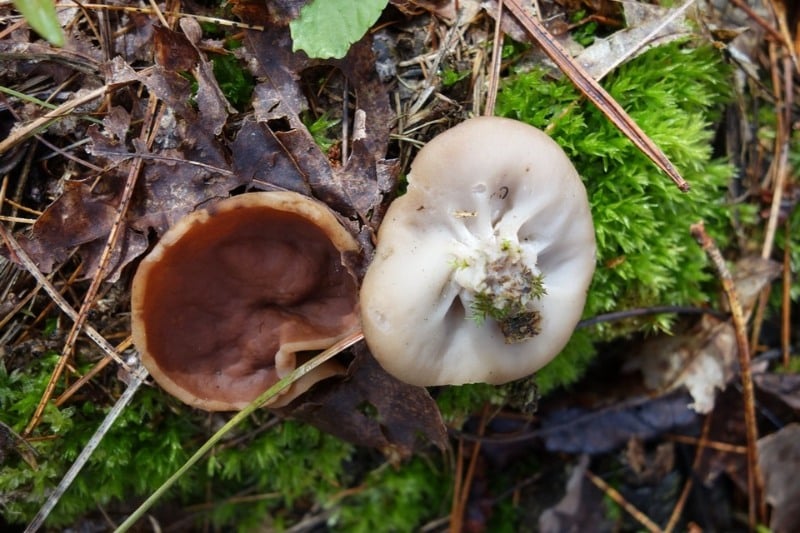
Common Brown Cup Mushroom Edibility
The brown cup fungus is edible but not foraged very often. There isn’t much to it, and it doesn’t have a distinctive taste, so it’s usually bypassed. If you were desperate, you could eat this species (cooked!), but other than that, there’s not much reason to forage them. They also fall apart super easily due to their thin flesh, so even getting them home and into the frying pan is an adventure.
Common Questions About Brown Cup Mushrooms
Is the Common Brown Cup Fungus medicinal?
No, there are no reported medicinal uses for the common brown cup fungus.
Is the common brown cup mushroom edible?
Technically, yes, this mushroom is edible because it isn’t toxic. However, it is rarely harvested because the flesh is insubstantial and has no distinct flavor. Please be certain of your identification if you intend to eat this species as there are a lot of lookalikes.






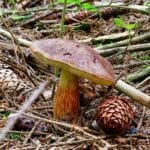
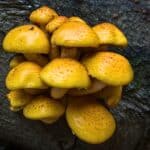
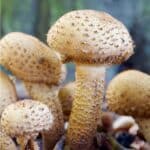
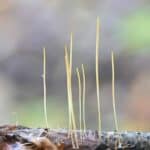
Glenda T Bona
My 4′ x 8′ raised bed has an infestation of brown cup fungus. I live in Henderson, Nevada where summers keep getting hotter. My solution was to cover the bed with a garden tent that is vented, but still holds in the moisture. I spent money on the really good soil. The first year, my yields were tremendous.
I removed the tent today and see brown cup fungus on about 10% of the soil surface. Yes, it is edible. And fungus is supposed to be a good thing, right? Well, it looks pretty gross and I want to add some soil to the bed and put transplants in that 4×8.
What do I do with the brown cup fungus?
Jenny
You’ll never get completely rid of them unless you dig up and replace all the soil and hope the new soil doesn’t have spores or mycelium in it. The brown cup fungi mycelium (root system) is all in the soil year round. It is a sign of healthy soil, so no worries there. It looks like you have a few choices, put up with it (how long does it last – a week or so?) – can you deal with the looks for a short time? Or, replace the soil and hope for the best. The mushrooms are just Mother Nature doing her natural thing, so personally, I embrace and celebrate it even if it does not look picturesque.